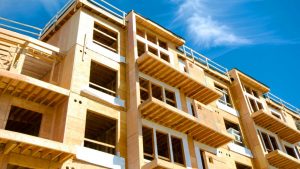An engineering professor and his former PhD student at UBC’s Okanagan campus in Kelowna have developed “a residual drift-based design” for concrete bridges that employs a super-elastic reinforcement alloy which can withstand the impact of earthquakes.
Conventional reinforced steel, by comparison, sustains “large deformation demand during big earthquakes which causes the steel to strain beyond its elastic limit,” says Shahria Alam, associate professor in the school of engineering at UBC’s Okanagan campus in Kelowna.
A case in point is the earthquake that hit Kobe, Japan, in 1995 leaving more than 100 steel reinforced concrete bridges beyond repair. If those bridges were reinforced with a super-elastic memory alloy, they might have only required “minor repairs” because the alloy can deform and return to its original state without damage, says Alam, adding that earthquakes teach engineers new things about structures — and how to improve them.
The engineering professor and his former PhD student Muntasir Billah — now employed as a bridge engineer in Vancouver — designed five bridge pier models, each with a different alloy reinforcement. They were tested to different seismic scenarios forces that B.C.’s Lower Mainland could face.
All of the alloys performed well but one — ferrous polycrystalline alloy — stood out from the rest, he says.
“They all have a self-centering capability: When you load it, it goes into large deformation — the elastic stage but it does not have permanent deformation which is why it is unique.”
Actual bridge piers were constructed and tested at the University of Nevada in Reno, but the UBC pair developed a design using several numerical guidelines for detailing bridges through their modelling tests.
The super-elastic alloy must overcome a number of hurdles before it can be considered for adoption in design building codes. And, right now it is impractical because of its high price — about $80/kg for a nickel-titanium alloy compared to offshore steel rebar priced as low as $500 per tonne.
But Alam believes that continued research around the globe will help bring the price down largely because of the use of copper and iron in the alloy’s composition.
“In the next five to 10 years you will see many different alloys in the market that will be cheaper and competitive with regular steel.”
The “true value” of the alloy is determined through life cycle analysis, he says adding that the product also has “very good corrosion-resistance — maybe even better than stainless steel.”
Super-elastic alloys were discovered in the 1960s by the U.S. Navy. Since then research has evaluated it for different applications.
Alam says that building codes place more emphasis on infrastructure designs that can withstand earthquakes now than they did decades ago because there is more at stake in today’s growing cities when infrastructure goes down.
“The losses increase substantially because of urbanization. Previously we thought life safety was most important and we didn’t have to consider infrastructure safety. Now, we see infrastructure is a huge investment that we don’t want to lose.”
“It gives this product a great advantage and at the same time we see it as a more sustainable (design) solution for infrastructure.”
While Alam’s research looked at alloys in new construction, he says there is also potential for using alloys in bridge repairs and retrofits.
The engineering professor has also done research on alloys as reinforcement for concrete beam/column connections in buildings exposed to earthquakes. “We showed that a building will perform the same way (as a bridge) and won’t experience permanent damage.”
Alam and another student have patented a buildings and bridges bracing system with the alloys in Canada, the U.S. and Japan.
“We have developed models and tools for structural engineers so they can analyze and design those structures fitted with such new bracings.”











Recent Comments
comments for this post are closed